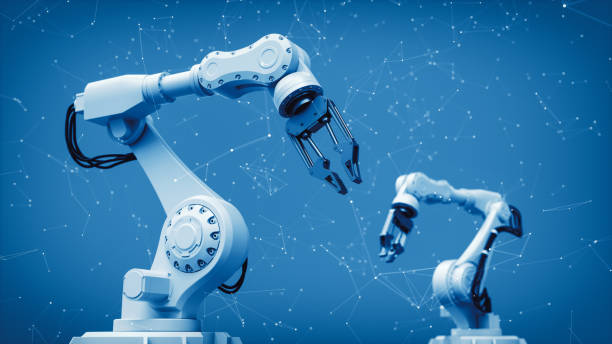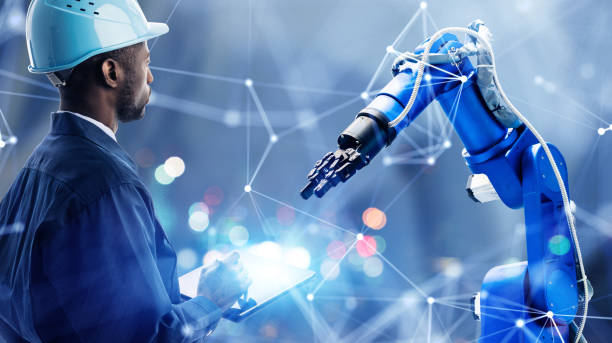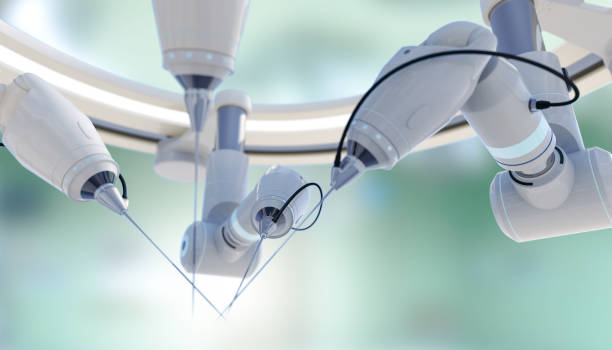Presentation: Robotics
In the chronicles of mankind’s set of experiences, hardly any mechanical headways have caught the aggregate creative mind, much like advanced mechanics. From the early fantasies of robots to the cutting-edge dreams of humanoid machines, the idea of clever, independent machines has been a consistent installation in sci-fi and logical talk. Today, robotics is not generally restricted to the domains of imagination; a rapidly propelling field is reshaping ventures, medical services, and our day-to-day routines. This article investigates the development of advanced robotics, from its modest starting points to the present status of craftsmanship, and checks out the ramifications and future prospects of this extraordinary innovation.

The starting points of advanced mechanics
Antiquated Machines
The underlying foundations of advanced mechanics can be traced back to antiquated civilizations. In Greece, for instance, the legends of Pygmalion and Galatea portrayed a stone carver who became hopelessly enamored with a sculpture he made and wished it could show some signs of life. This old story mirrors humankind’s perseverance through an interest in making counterfeit creatures.
The Renaissance and Automata
During the Renaissance, creators like Leonardo da Vinci made unpredictable mechanical gadgets and automata, for example, the well-known “robot knight” that could move its appendages. These early efforts to make mechanical life showed the human longing to repeat and figure out the multifaceted activities of living organic entities.
The Introduction of Present-Day Robotics
The Unimate: A Spearheading Robot
The cutting-edge period of advanced mechanics started during the 1950s with the creation of the Unimate, the world’s most memorable modern robot. Created by George Devol and Joseph Engelberger, the Unimate was intended to perform tedious undertakings in a production line setting. Its prosperity denoted the start of the robotization transformation in assembly.
Advanced mechanics in space investigation
The space race of the 1960s and 1970s sped up the improvement of advanced mechanics. NASA’s Apollo program utilized automated arms to control objects on the lunar surface, while the Viking missions to Mars utilized mechanical landers to concentrate on the Red Planet. These early mechanical undertakings laid the groundwork for future space investigations.

Progress in Advanced Robotics Innovation
Man-made Consciousness and AI
Perhaps the main jump in advanced mechanics accompanied the coordination of computerized reasoning (simulated intelligence) and AI. These innovations permitted robots to adjust and gain from their current circumstances, making them more flexible and equipped for dealing with complex errands. From self-driving vehicles to family robots, artificial intelligence has reformed the abilities of automated frameworks.
Scaling Down and Microbots
Progressions in scaling down have prompted the improvement of microbots—minuscule, bug-like robots equipped for performing complex assignments in restricted spaces. These microbots hold extraordinary promise in fields like medication, where they can be utilized for designated drug conveyance and negligibly obtrusive medical procedures.
Humanoid Robots
Humanoid robots, intended to imitate human appearance and developments, have likewise taken huge steps. Robots like Boston Elements’ Mapbook can walk, run, and perform gymnastic moves, pushing the limits of what machines can accomplish with regard to portability and nimbleness.
Advanced Robotics in our regular routines
Medical services and clinically advanced mechanics
One of the most encouraging applications of advanced mechanics is in the field of medical services. Careful robots, like the da Vinci Careful Framework, have altered negligibly obtrusive medical procedures, decreasing recuperation times and working on persistent results. Robots are additionally being utilized for assignments like patient consideration and restoration, giving help to people with disabilities.
Independent Vehicles
The car business has embraced advanced mechanics through the improvement of self-driving vehicles. Organizations like Tesla, Waymo, and Uber are chipping away at independent vehicle innovation, which can possibly change transportation by further developing security and decreasing gridlock.
Advanced mechanics in schooling and exploration
Robotics has tracked down its direction into schooling and examination, offering understudies and researchers a stage to investigate ideas in science, innovation, design, and math (STEM). Robotics contests and instructive projects have become progressively well-known, encouraging another generation of pioneers.
Moral and cultural contemplations
Mechanization and Occupation Dislodging
The ascent of advanced mechanics and robotization has raised worries about work dislodging. As machines become more fit for performing errands customarily finished by people, it is vital to address the likely effect on the labor force and foster techniques for retraining and upskilling.
Moral Problems
Robots additionally present moral predicaments. Inquiries concerning robot freedoms, obligations regarding independent activities, and the utilization of man-made intelligence in direction have ignited banter inside the field of advanced mechanics morals. Finding some kind of harmony between innovative advancement and moral contemplation is significant.
The Eventual Fate of Advanced Mechanical
The commitment to simulated intelligence
The fate of advanced mechanics is certainly intertwined with the improvement of computer-based intelligence. As computer-based intelligence calculations become more complex, robots will acquire the capacity to comprehend and answer normal language, making them considerably more open and helpful in different areas.
Human-Robot Cooperation
The idea of human-robot cooperation is on the ascent. Robots are being intended to work close by people in production lines, medical services settings, and even homes. This cooperative methodology can further develop productivity and security while keeping up with human association in navigation.
Space Investigation, and then some
Robots will keep on assuming a significant role in space investigation. Future missions to far-off planets and divine bodies might depend on cutting-edge automated frameworks to direct trials and accumulate information in unforgiving and distant conditions.
End
The development of robotics has been a striking excursion, from old legends and mechanical automata to the refined robots of the cutting-edge period. As advanced mechanics innovation keeps on propelling, it holds the commitment of changing businesses, further developing medical care, and improving our regular routines. Be that as it may, to whom much is given, much will be expected, and moral contemplations should direct the turn of events and the sending of automated frameworks. The fate of advanced mechanics is splendid; however, it is fundamental to explore the difficulties and potential open doors that lie ahead with astuteness and foreknowledge. At last, robotics isn’t simply a logical undertaking; it is an impression of humankind’s limitless interest and innovativeness.
FAQS
- What is robotics?
- Robotics is a multidisciplinary area of innovation that includes the planning, development, programming, and activity of machines known as robots. These robots can be independent or constrained by people and are utilized for different assignments and applications.
- What are the various kinds of robots?
- Robots come in different kinds, incorporating modern robots utilized in assembly, administration robots for assignments like cleaning and conveyance, clinical robots for medical procedures and medical services, and, surprisingly, social robots intended for human communication. Additionally, there are specific robots for fields like space investigation and horticulture.
- How do robots function?
- Robots work through a blend of equipment and programming. They have sensors to see their current circumstances, actuators to control objects, and a focal handling unit (computer chip) or PC to handle data and simply decide. Programming and calculations are utilized to control their activities and ways of behaving.
- What is the job of man-made consciousness (computer-based intelligence) in advanced mechanics?
- Computer-based intelligence assumes a huge role in robotics by empowering robots to gain from their current circumstances, adjust to evolving circumstances, and decide. AI and profound learning procedures are in many cases used to prepare robots to perform explicit assignments and work on their exhibition after some time.
- Might robots at any point supplant people in the labor force?
- While robots can computerize many assignments, they are ordinarily intended to supplement human specialists as opposed to supplant them completely. Computerization can prompt work removal in certain ventures, yet it can likewise set out new open doors and upgrade efficiency.

Cool. Robot 🤖